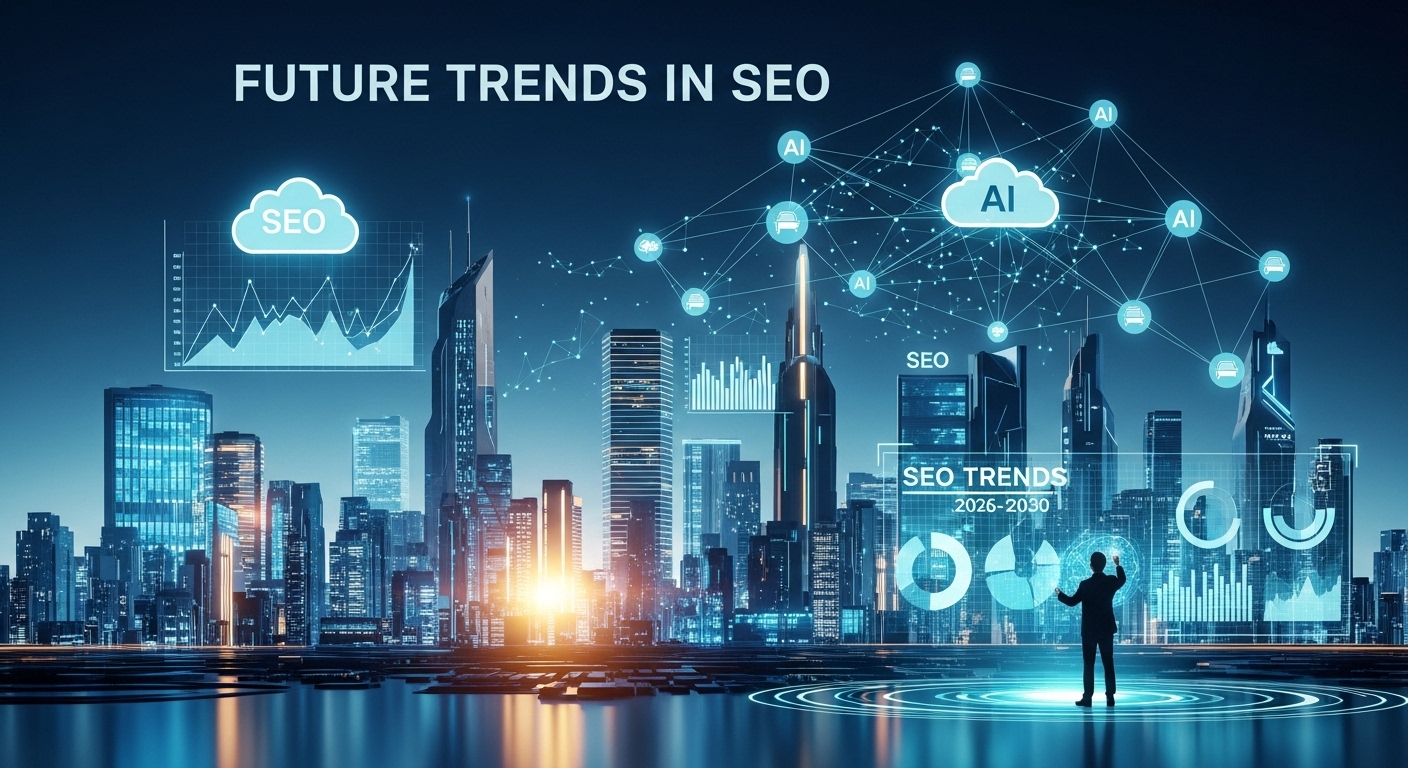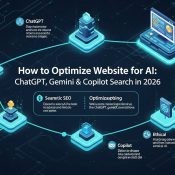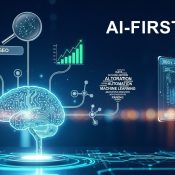
Future Trends in SEO and Web Infrastructure (2026–2030)
Future Trends in SEO and Web Infrastructure (2026–2030)
The digital landscape is changing faster than ever — and SEO is evolving with it.
Between AI-driven search, edge computing, user privacy laws, and next-gen infrastructure, the rules of visibility are being rewritten.
By 2030, the websites that thrive won’t just have good content; they’ll have optimized infrastructure, machine-readable data, and human-first performance built into their DNA.
At 24SevenHub, we believe the future of SEO and web infrastructure lies in convergence — where search optimization, security, speed, and architecture become one seamless ecosystem.
ALSO, READ Zero Trust Security for Web Apps: Modern Architecture for 2026
This guide explores the key trends that will shape SEO and web infrastructure from 2026 to 2030, and how forward-thinking businesses can prepare right now.
1. The New SEO Reality: Beyond Keywords
Traditional SEO relied on keywords, backlinks, and page titles.
The future relies on context, entities, and experience.
1.1 Entity-Based Search
Google no longer indexes “pages” — it indexes “things.”
Entities (people, places, organizations) form a knowledge graph that helps AI understand meaning, not just words.
SEO must evolve from keyword stuffing to semantic relevance — structuring content with schema markup and consistent context across all pages.
1.2 Search Generative Experience (SGE)
By 2026, Google’s SGE integrates AI-generated answers above results.
This means your content must be summarizable and citation-worthy to appear in AI overviews.
- Clear headings and concise explanations win visibility.
- Pages with strong authority, schema, and trustworthiness will feed these new AI snippets.
2. Future Trend #1: AI-Powered SEO Automation
Artificial Intelligence is no longer assisting SEO — it’s executing it.
2.1 Predictive Optimization
AI tools analyze historical trends to recommend updates before rankings drop.
For example, machine learning models can predict which pages may lose traffic and suggest preemptive improvements.
2.2 Natural Language Generation (NLG)
AI can now produce human-level content, but success depends on editorial oversight.
24SevenHub uses hybrid systems — AI drafts, human refines — ensuring originality and factual depth.
ALSO, READ Web Performance Optimization: From 0 to 100 Speed & Edge Strategies
2.3 Personalized Search
Search engines use AI to tailor results per user behavior.
Your SEO strategy must adapt to audience segments, not one-size-fits-all keywords.
3. Future Trend #2: Core Web Vitals 2.0
Google’s Core Web Vitals will expand to measure deeper user signals:
- INP (Interaction to Next Paint): replacing FID for interactivity accuracy.
- TBT (Total Blocking Time): measuring responsiveness between actions.
The focus is moving from raw speed to experience flow — how fast, stable, and interactive your website feels.
What This Means:
- Optimize animations and dynamic content.
- Audit responsiveness on real devices, not just lab tools.
- Reduce JavaScript bloat with code splitting.
4. Future Trend #3: Decentralized & Edge Hosting
By 2030, global content delivery will shift toward edge-first architecture — serving content closer to the user through distributed nodes.
Benefits:
- Millisecond latency
- Better security through isolation
- Improved SEO via faster global response times
Platforms like Cloudflare Workers, Vercel Edge, and Bunny Edge Storage will become the new hosting standard.
Businesses that migrate early will outperform laggards in speed and reliability metrics.
5. Future Trend #4: Privacy-Driven SEO
5.1 End of Third-Party Cookies
Google will fully phase out third-party cookies by 2026.
Marketers must adapt using:
- Server-side tracking
- First-party data collection
- Consent-based analytics
5.2 Privacy as a Ranking Factor
Search engines increasingly prioritize privacy transparency.
Websites that clearly communicate cookie policies and security practices earn user trust and higher dwell time.
24SevenHub Tip: Build privacy banners that are fast, compliant, and minimal — not intrusive.
6. Future Trend #5: API-First and Headless SEO
Modern websites are evolving into headless architectures — decoupling the front end (UI) from the back end (content source).
This allows:
- Instant content updates via APIs
- Seamless multi-channel publishing (web, mobile, IoT)
- Faster rendering and lower TTFB
SEO in Headless Environments:
- Implement server-side rendering (SSR).
- Use pre-rendering for bots.
- Ensure meta and schema data exist in API responses.
7. Future Trend #6: Security-Integrated Infrastructure
Security and SEO are merging disciplines.
A secure site not only protects users but sustains rankings.
- HTTPS and HSTS enforcement increase trust signals.
- Reduced downtime improves crawl rate.
- Secure headers improve browser compatibility.
As Zero Trust models become mainstream, SEO professionals must collaborate with DevSecOps teams.
ALSO, READ Programmatic SEO: Scaling Content Without Dilution
8. Future Trend #7: Structured Data Everywhere
By 2030, schema markup will be as essential as meta titles.
AI search and voice assistants rely on structured data to interpret context.
Essential schema types:
ArticleFAQPageProductLocalBusinessHowTo
Emerging schema types:
AIModelDataFeedVideoObjectfor generative search visibility
9. Future Trend #8: Visual & Voice Search
Voice search adoption is expected to surpass 60 % globally by 2030.
Visual search (Google Lens, Pinterest, TikTok) is also rising.
To prepare:
- Use conversational tone for voice queries.
- Add alt text + structured captions for visuals.
- Optimize file names descriptively (
black-leather-sneakers.jpg).
Future SEO = answering both spoken and visual questions effectively.
10. Future Trend #9: Sustainability & Green Hosting
Eco-conscious infrastructure is becoming a differentiator.
Google and AWS already rank sustainability in procurement choices.
Steps to go green:
- Host with renewable-powered providers (e.g., Google Cloud Carbon Free).
- Reduce unnecessary scripts and tracking.
- Optimize media to lower carbon bandwidth.
Users are increasingly valuing eco-optimized websites.
11. Future Trend #10: The Rise of Semantic AI Indexing
By 2030, AI models will index meaning, not keywords.
Semantic relationships (e.g., “cybersecurity training” ↔ “ethical hacking”) will drive ranking relevance.
How to prepare:
- Use internal linking to establish topic clusters.
- Build pillar pages connected to subtopics.
- Use schema to help machines infer relationships.
12. The 24SevenHub Roadmap: Preparing Clients for the Future
Our future-proof SEO model combines four pillars:
- Technical SEO — structure, schema, and Core Web Vitals.
- Security Integration — encryption, monitoring, Zero Trust architecture.
- AI Automation — adaptive optimization and content analysis.
- Scalable Infrastructure — edge deployment and headless CMS design.
We don’t just chase algorithms — we build systems that evolve with them.
13. Key Takeaways
| Trend | Why It Matters |
|---|---|
| AI SEO Automation | Predicts ranking shifts before they happen |
| Edge Computing | Faster, secure global delivery |
| Headless Architecture | Speed, scalability, flexibility |
| Privacy Compliance | Trust + rankings |
| Structured Data | Required for AI-driven indexing |
14. Conclusion
The next decade of SEO will be defined by intelligence, infrastructure, and integrity.
Those who prepare their foundations today will dominate search tomorrow.
At 24SevenHub, we build the future-ready infrastructure your brand deserves — optimized for speed, secured for threats, and structured for tomorrow’s algorithms.
The future isn’t waiting — it’s indexing.
FAQs
What are the biggest future trends in SEO?
AI-driven automation, edge hosting, privacy-first analytics, and structured data expansion
How will AI change SEO by 2030?
AI will automate optimization and personalize search results for every user
Why is infrastructure important for SEO?
Fast, secure, and scalable infrastructure directly improves rankings and user experience.
What’s next after Core Web Vitals?
Google’s next evolution includes INP and TBT — deeper interactivity metrics
How can 24SevenHub help businesses prepare?
We integrate SEO, security, and scalable infrastructure to future-proof visibility.*




